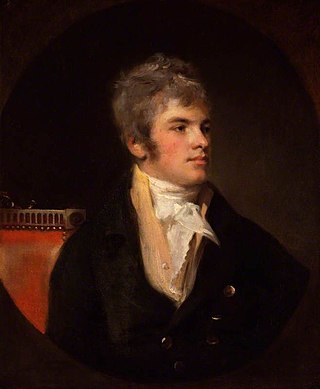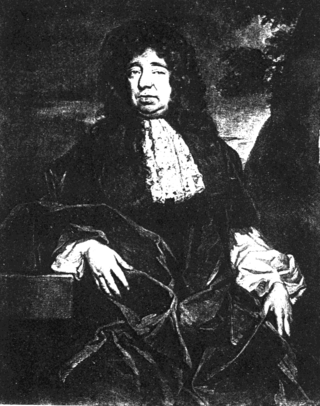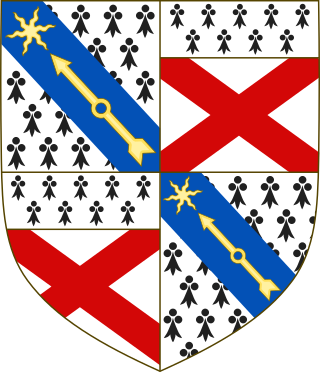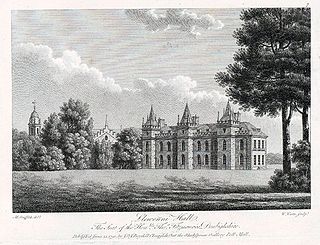
William Petty Fitzmaurice, 1st Marquess of Lansdowne,, was an Anglo-Irish Whig statesman who was the first home secretary in 1782 and then prime minister in 1782–83 during the final months of the American War of Independence. He succeeded in securing peace with America and this feat remains his most notable legacy.

Henry Petty-Fitzmaurice, 3rd Marquess of Lansdowne,, known as Lord Henry Petty from 1784 to 1809, was a British statesman. In a ministerial career spanning nearly half a century, he notably served as Home Secretary and Chancellor of the Exchequer and was three times Lord President of the Council.

Marquess of Lansdowne is a title in the Peerage of Great Britain created in 1784, and held by the head of the Petty-Fitzmaurice family. The first Marquess served as Prime Minister of Great Britain.
Baron Kerry is an ancient title in the Peerage of Ireland, named after County Kerry. It was created circa 1223 for Thomas FitzMaurice, Lord OConnello, son of Maurice FitzGerald, Lord of Llanstephan.

Earl of Shelburne is a title that has been created two times while the title of Baron Shelburne has been created three times. The Shelburne title was created for the first time in the Peerage of Ireland in 1688 when Elizabeth, Lady Petty, was made Baroness Shelburne. She was the wife of the noted economist Sir William Petty. The title was for life only and became extinct on her death in circa 1708. On the same day that Lady Shelburne was elevated to the peerage, her eldest son by Sir William Petty, Charles Petty, was also raised to the Peerage of Ireland as Baron Shelburne. He died young in 1696, when the title became extinct. The barony was created for a third time in the Peerage of Ireland in 1699 in favour of the Hon. Henry Petty, younger son of Sir William Petty and Lady Shelburne. In 1719 he was further honoured when he was made Viscount Dunkerron and Earl of Shelburne, also in the Peerage of Ireland. On his death in 1751 these titles also became extinct.

Charles Maurice Petty-Fitzmaurice, 9th Marquess of Lansdowne,, styled Earl of Shelburne between 1944 and 1999, is a British peer, landowner and army officer.

Henry Thomas Petty-Fitzmaurice, 4th Marquess of Lansdowne, styled Lord Henry Petty-FitzMaurice until 1836 and Earl of Shelburne between 1836 and 1863, was a British politician.

Field Marshal Stapleton Cotton, 1st Viscount Combermere, was a British Army officer, diplomat and politician. As a junior officer, he took part in the Flanders Campaign, in the Fourth Anglo-Mysore War and in the suppression of Robert Emmet's insurrection in 1803. He commanded a cavalry brigade in Sir Arthur Wellesley's Army before being given overall command of the cavalry in the latter stages of the Peninsular War. He went on to be Commander-in-Chief, Ireland and then Commander-in-Chief, India. In the latter role he stormed Bharatpur—a fort which previously had been deemed impregnable.
Mary FitzMaurice, 4th Countess of Orkney was a Scottish peer, the only surviving child of Murrough O'Brien, 1st Marquess of Thomond and Mary O'Brien, 3rd Countess of Orkney.

Thomas John Hamilton FitzMaurice, 5th Earl of Orkney was a Scottish aristocrat.

Lleweni Hall was a stately home in Denbighshire, northeast Wales, around 2 miles (3.2 km) north-east of Denbigh on the banks of the River Clwyd. It was the principal seat of the Salusbury family and their descendants from 1289 until 1748, and the present territorial designation of the most senior branch of the family.

Colonel Sir Watkin Williams-Wynn, 5th Baronet was a Welsh landowner and Tory politician who sat in the House of Commons from 1794 to 1840.
Sir Robert Salusbury Cotton, 5th Baronet was an English politician who sat in the House of Commons from 1780 to 1796.

Sir Robert Cotton, 1st Baronet was an English Whig politician. He was Member of Parliament (MP) for Cheshire from 1679 to 1681 and from 1689 to 1702.
William Edward FitzMaurice was a British Conservative Party politician.
John Hamilton FitzMaurice, Viscount Kirkwall, known as John FitzMaurice until 1791, was a British politician.
John Petty Fitzmaurice, 1st Earl of Shelburne PC (Ire), known as John FitzMaurice until 1751 and as The Viscount FitzMaurice between 1751 and 1753, was an Anglo-Irish peer and politician. He was the father of William Petty FitzMaurice, Prime Minister of Great Britain from 1782 to 1783.
Thomas Fitzmaurice or Thomas FitzMaurice may refer to:
Frederick West was a British politician who sat in the House of Commons from 1801 to 1806.
Robert Baikie was a Scottish politician from Tankerness and Egilshay in Orkney.












